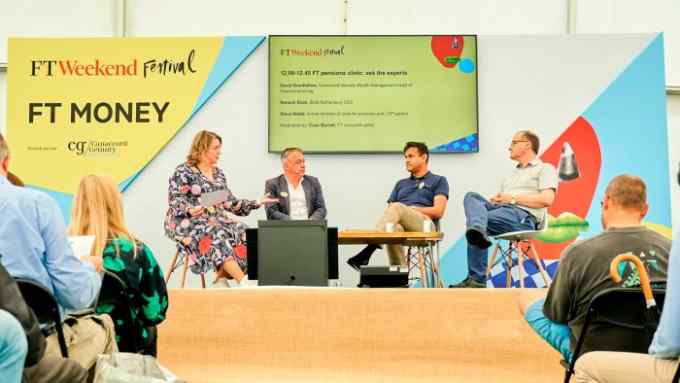Best of FT Money 2023: Trump is right on asset prices


Roula Khalaf, Editor of the FT, selects her favourite stories in this weekly newsletter.
Who would have believed that one of the most useful aphorisms in the history of investing would have come from Donald Trump’s fraud trial in New York’s supreme court this week?
“There are many ways to value assets and all are accurate even if they give different results” said the ex-president’s lawyer Christopher Kise in his rebuttal of claims that Trump deliberately inflated his property values.
In my opinion nothing out of the wise mouth of Warren Buffett comes close. Nor does John Maynard Keynes’s line that we are all dead in the long run — which I’ve always found to be kind of obvious.
Investors the world over should cut out Kise’s sentence and stick it on their monitor. If there is space, add his important reminder that “estimated current values” are not the same as “fair value or market value”.
Because never forget that valuing assets is an art not a science. We all pretend it’s the latter, with our spreadsheets, discounted cash flows and comparable ratios. But imagination and interpretation matter more.
Outright fraud is a different story of course. The multiple ways to value something are not licences to make stuff up. In 35 pages of sometimes hilarious evidence the judge’s summary ruling argues that Trump did just that.
For example we all know real estate agents who add lofts or outside sheds in order to inflate a home’s size. And indeed Trump’s lawyers argue that “the calculation of square footage is a subjective process”.
But turning a 10,966 square foot triplex in Trump Tower into a pad three times as big must have taken some creative measuring. Did they include the ceiling and the walls? Funnier still, this resulted in a valuation of $180mn-$327mn when the most expensive apartment in New York at the time sold for $88mn
Then again, who knows what the personal home of Trump might sell for if two Maga-billionaire supporters of the ex-president ever waged a bidding war? It is a unique property so comparable market values are meaningless too.
And yet the summary judgment says that “courts have long found that generally it is the market value which provides the most reliable valuation for assessment purposes”. Courts do not have much experience of investing then.
In 1989 market prices said it was correct that 10 out of 10 of the world’s biggest banks were Japanese and one square kilometre of central Tokyo was worth more than California. They were soon wrong.
A decade later equity markets valued WorldCom at $180bn. Its fair value turned out to be zilch. Lucent Technologies ended up being worth $85bn less than my analyst colleagues thought in 1996. And the share price of the German bank we worked for at the time tripled over the following five years and since has fallen by two-thirds.
So much for markets having a clue. But individuals are no better. Only eight out of 26 analysts had a “buy” recommendation on Tesla in 2019 and one reckoned its fair value was zero. That’s a $800bn misvaluation. Meanwhile in 2012, I wrote that Mark Zuckerberg was bonkers to pay $1bn for Instagram.
The latter is arguably the best purchase in history, adding perhaps $150bn of market cap to Meta. In other words, Instagram’s fair value was actually 15,000 per cent higher than its current value at the time — that is, the purchase price.
In comparison the New York attorney-general accuses Trump of overvaluing his assets by between 17.27 and 38.51 per cent. (That the numbers are given to two decimal points each shows how little lawyers understand margins of error.)
The judge concludes that the “defendants’ assertion that the discrepancies between their valuations and the attorney-general’s are immaterial is nonsense”. Sure, even the low-end estimate of a gap of $812mn is a lot of money. But when it comes to valuation analysis, even a 38 per cent variation is pretty close.
What are the lessons here for investors, apart from taking your own tape measure if you ever buy a property from the Trump Organization? For me, Kise’s quote about the many ways to value an asset is a reminder that we should always use as many of them as possible.
Determining what something is worth is extremely hard. As I’ve shown above, even markets, with millions of participants poring over every detail of a company, often fail to see value when it is there, or ascribe value when there is none.
But we must try. And because all valuation methodologies are flawed to a greater or lesser degree, the best approach is to derive scores of estimates and hope that somewhere in the middle of them approximates fair value.
While you will make some howling mistakes, at least you have done everything you can. I have lost much more sleep over bad investments purchased after only a cursory look than duds analysed from 100 angles.
Over the coming months I am going to write about the panoply of valuation approaches that analysts use to value the common types of assets we all invest in. I will explain why some are better than others, and how to calculate them without ripping your hair out (as I have done).
The other lesson for investors to take away from Trump’s trial is a more cynical one. Fraud is illegal and rightly so. However, there are shades of misrepresentation and I have never seen a valuation model that hasn’t been massaged in some way to fit a narrative.
Everyone does it. Therefore readers also have to know the tricks analysts pull in order to achieve the asset values they desire. I will cover these too in the columns ahead as well as how to spot them.
The author is a former portfolio manager. Email: stuart.kirk@ft.com; X: @stuartkirk__

Comments